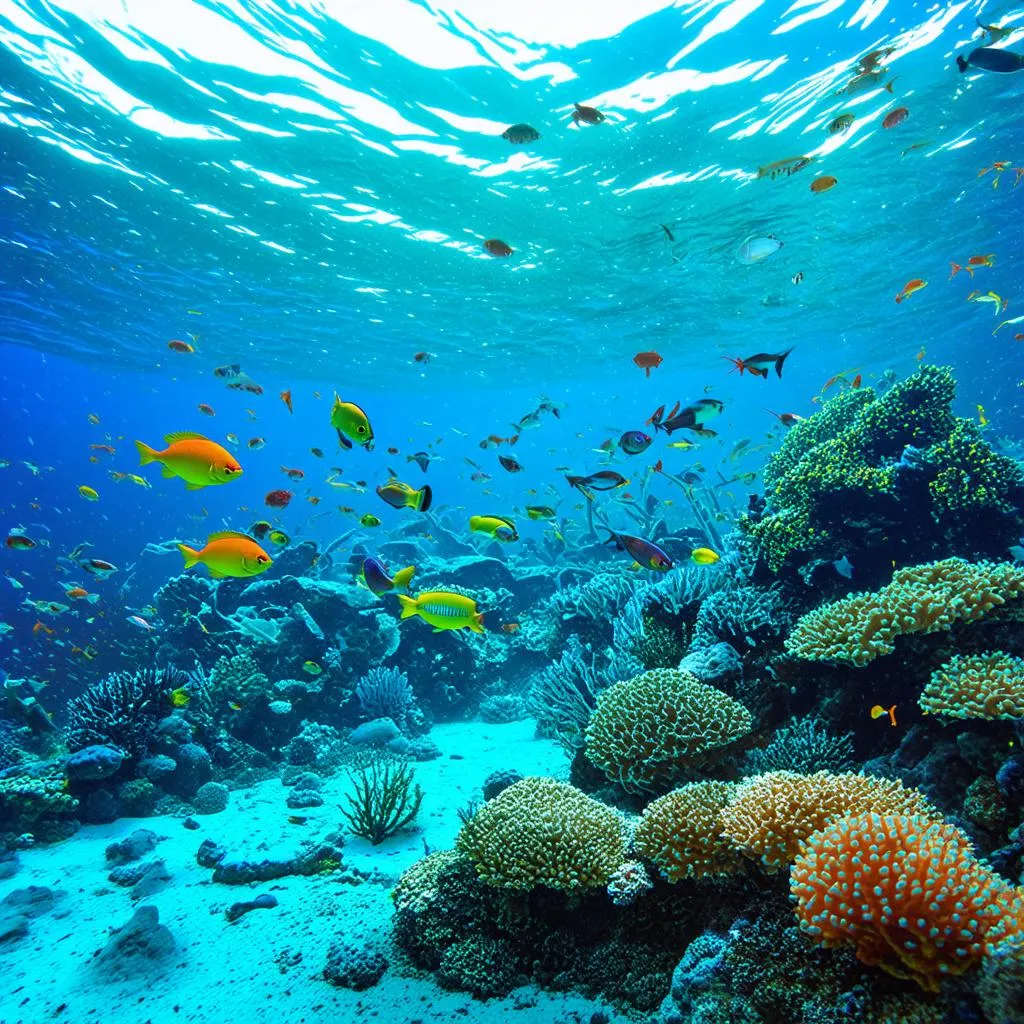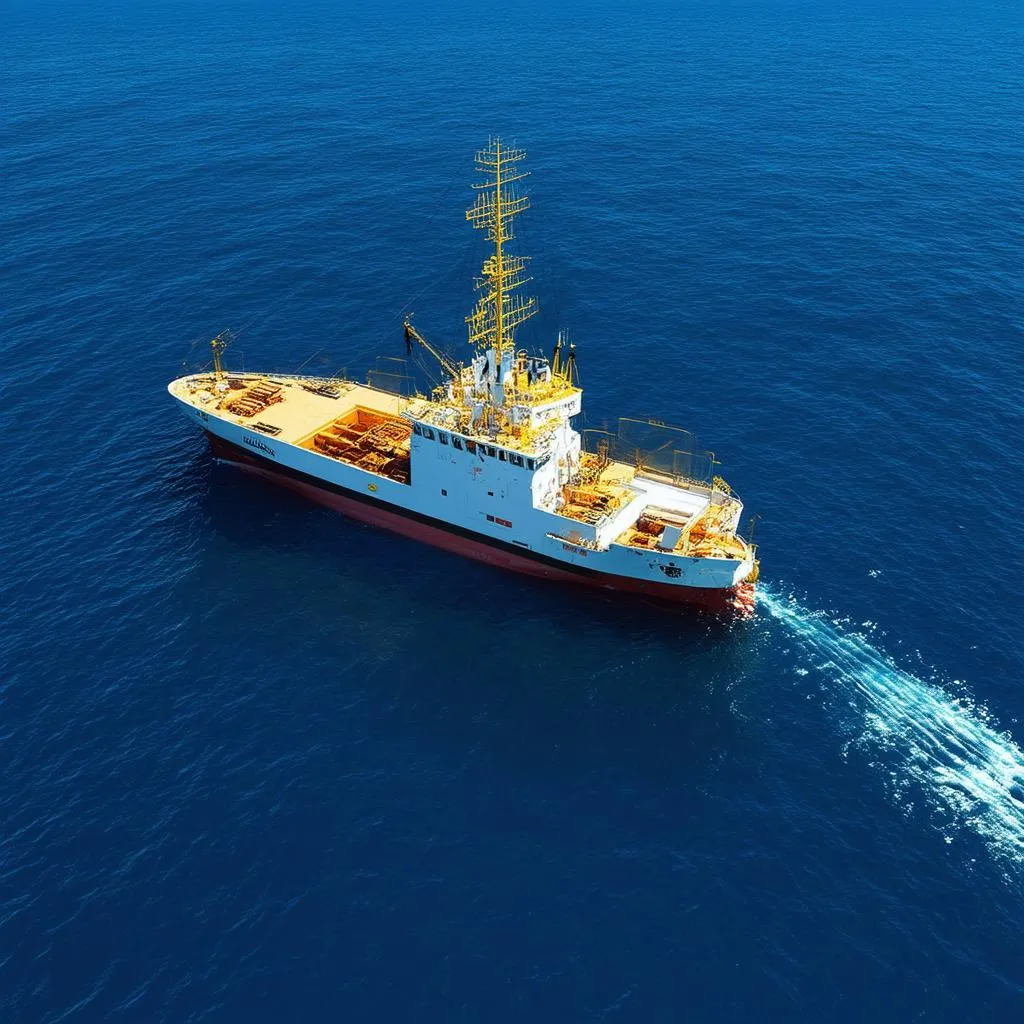Have you ever wondered how marine life communicates in the vast expanse of the ocean? Or how sonar systems are used to map the ocean floor? It all comes down to the fascinating way sound travels underwater. Unlike our experiences on land, sound behaves quite differently in the aquatic realm. Let’s dive deep and explore the speed of sound underwater and uncover the secrets of this underwater symphony.
The Speed of Sound: Land vs. Water
We all know that sound travels incredibly fast, but did you know it travels even faster underwater? On average, sound zips through the air at approximately 343 meters per second (or a whopping 767 miles per hour!). However, submerge yourself in the ocean, and sound picks up the pace, traveling at around 1,500 meters per second (about 3,355 miles per hour). That’s more than four times faster!
Why the Difference?
This difference in speed boils down to the medium through which sound travels. Sound waves are vibrations that propagate by compressing and expanding molecules. Water, being denser than air, has molecules packed more tightly together. This closer proximity allows sound waves to transfer energy more efficiently, resulting in faster travel times.
Imagine standing on the bustling streets of Hanoi, Vietnam, trying to have a conversation. The noise from motorbikes and street vendors might make it challenging to hear. Now, picture yourself scuba diving amidst the coral reefs of the Great Barrier Reef. Despite the distance, you can clearly hear the clicking sounds of snapping shrimp. This difference in sound clarity and distance is due to water’s higher density compared to air.
Factors Influencing Underwater Sound Speed
While the average speed of sound underwater is around 1,500 meters per second, several factors can influence this speed:
1. Temperature
As the temperature of water increases, so does the speed of sound. This is because warmer water molecules have more energy and vibrate faster, allowing sound waves to travel more quickly.
2. Salinity
The saltier the water, the faster sound travels. Saltwater is denser than freshwater due to dissolved salts, which increases sound wave propagation speed.
3. Pressure
As you descend deeper into the ocean, pressure increases. This increased pressure compresses water molecules, leading to faster sound speed.
The Significance of Underwater Sound
Understanding how sound travels underwater is crucial in various fields, including:
1. Marine Biology
Marine animals rely heavily on sound for communication, navigation, and hunting. Whales, for example, communicate through long-distance calls that can travel for hundreds of miles underwater.
2. Sonar Technology
Sonar (Sound Navigation and Ranging) uses sound waves to detect and locate objects underwater. This technology is vital for mapping the ocean floor, finding shipwrecks, and navigating submarines.
3. Oceanography
Scientists use underwater sound to study ocean currents, map underwater topography, and monitor marine mammal populations.
FAQs about Sound Underwater
1. Does sound travel faster in air or water?
Sound travels faster in water than in air due to water’s higher density.
2. What is the SOFAR channel?
The SOFAR channel is a layer of water in the ocean where sound waves can travel for thousands of miles due to varying temperature and pressure conditions.
3. How do marine animals use sound?
Marine animals use sound for communication, echolocation (like bats!), finding mates, and detecting predators.
Travel Tip: Exploring Underwater Soundscapes
Next time you’re planning a trip to a coastal destination like Halong Bay, Vietnam, consider booking a snorkeling or scuba diving excursion. Immerse yourself in the underwater world and listen closely to the symphony of sounds created by marine life and the ocean itself. You might be surprised by the cacophony of clicks, whistles, and pops that fill the underwater realm!
 Underwater Soundscape
Underwater Soundscape
The Ocean’s Hidden Harmony
From the whispers of currents to the songs of whales, the underwater world is alive with sound. Understanding how fast sound travels underwater not only unravels the mysteries of marine life but also highlights the intricate connection between physics and the natural world. So, next time you’re near the ocean, take a moment to appreciate the hidden symphony playing beneath the waves.
 Sonar Technology
Sonar Technology
For more fascinating insights into the world of sound and travel, be sure to explore other articles on TRAVELCAR.edu.vn.
